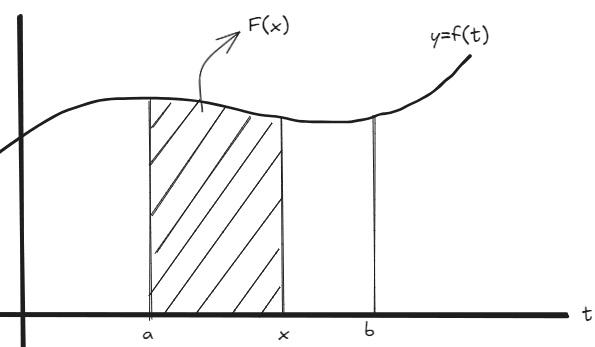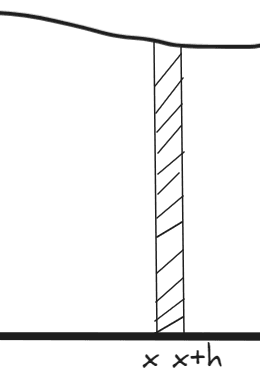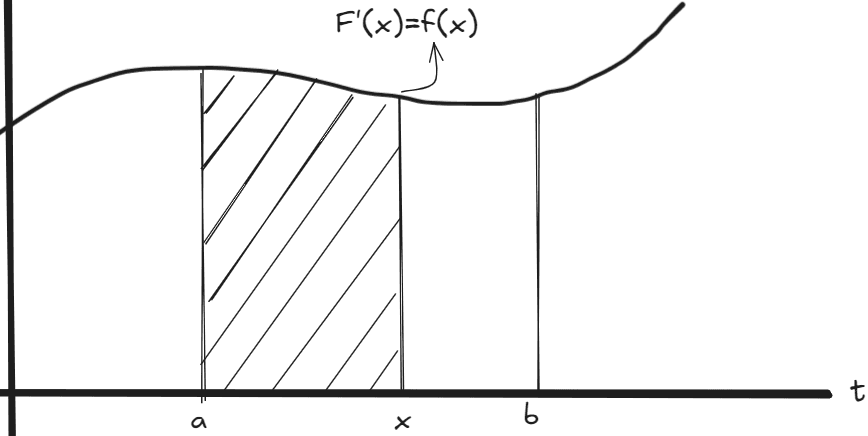Lets say the function \(f(x)\) is continous on [a,b], and lets say function the \(F(x)\) is defined by:
The function \(F(x)\) represents the area under the curve of \(f(x)\) from \(a\) to \(x\), where \(x\) varies between \(a\) and \(b\):

By definition of a derivative:
If we expand \(F(x)\):
We can rewrite this as:
Before going any further, let's first think about just integral of \( f(t)\) between \(x\) and \(x+h\):

This area can be represented in two ways, one is the integral, and the second is the average value of \(f\) in [x, x+h] times the interval width (\(h\)):
This means:
Going back to \(F'(x)\):
where \(f_{avg}(t)\) is the average value of \(f\) in [x, x+h]. This means if \(h \to 0\), then \(f_{avg}(t) = f(x)\), so:
This is the fundamental theorem of calculus (part 1).

\(F'(x) = f(x)\) means a tiny increase of \(F(x)\) at \(x\) is equal to \(f(x)\). Also, the lower bound of the integral (\(a\)) has no affect on \(F'(x)\).